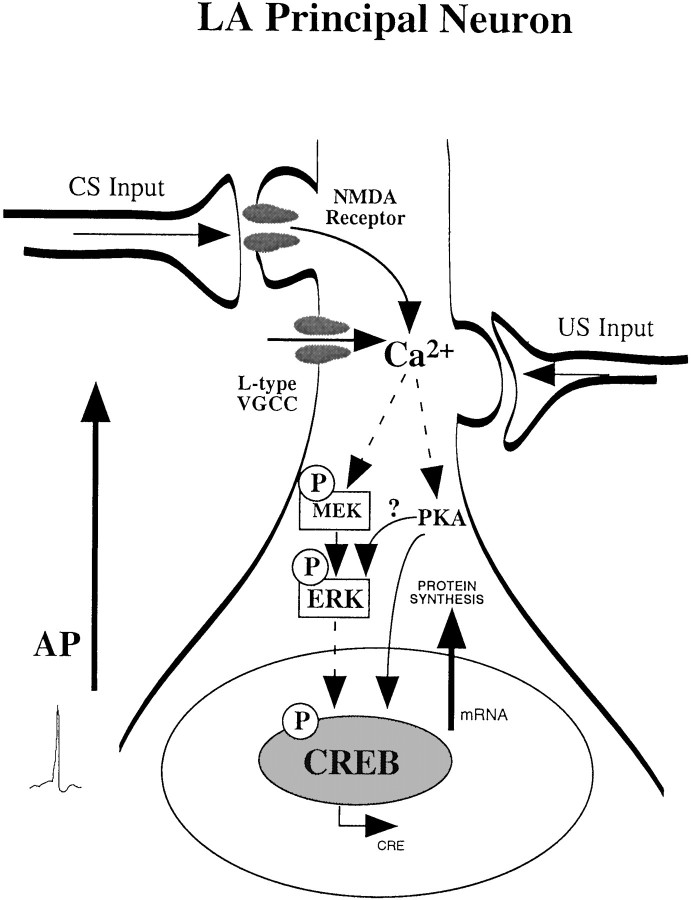Fig. 8.
Schematic of the cellular events that may underlie formation of long-term fear memories in the amygdala. Pairing of CS and US inputs in LA principal cells leads to calcium influx through either NMDA receptors or L-type VGCCs. L-type channels are opened on dendritic shafts and spines, possibly by backpropagating action potentials (AP) during training. The increase in intracellular Ca2+ leads to the activation of protein kinases, such as PKA and ERK/MAPK. Once activated, these kinases can translocate to the nucleus where they activate transcription factors such as CREB. The activation of CREB by PKA and ERK/MAPK promotes CRE-mediated gene transcription and the synthesis of new proteins. PKA, ERK/MAPK, CREB, RNA, and protein synthesis in the amygdala have all been shown to be necessary for the establishment of long-term fear memories.

